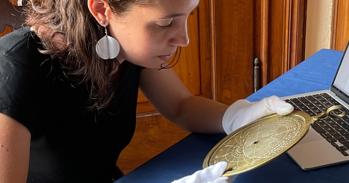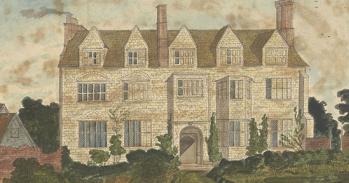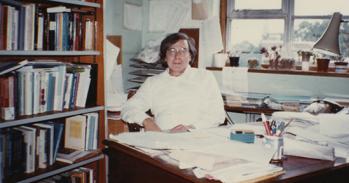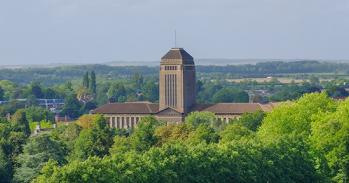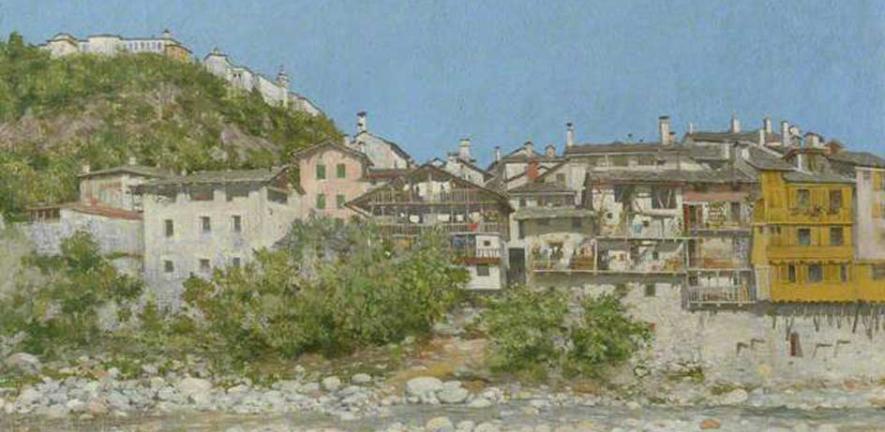
A Butler Day at St John’s College tomorrow (12 January) celebrates the many trips to Italy undertaken by the polymath Samuel Butler, author of Erewhon. The event comprises an exhibition and talks which are open to the public and free of charge.
A Butler Day at St John’s College tomorrow (12 January) celebrates the many trips to Italy undertaken by the polymath Samuel Butler, author of Erewhon. The event comprises an exhibition and talks which are open to the public and free of charge.
He was also forthright and disputatious, famously arguing that the Odyssey was not the work of Homer but of an unknown female author from Sicily.
Samuel Butler (1835-1902) was a man who defied easy categorisation: he has been most commonly described as a polymath, maverick and iconoclast. He was a scholar and writer, artist and photographer, musician and composer, traveller and sheep farmer. Prodigiously talented and hard-working, he was also forthright and disputatious, famously arguing that the Odyssey was not the work of Homer but of an unknown female author from Sicily.
Above all, Butler was an enthusiast who immersed himself in subjects that ranged from devotional art to the concept of evolution. He is best known for his novel Erewhon – ‘nowhere’ spelt (almost) backwards – a satire on Victorian society that challenged the accepted doctrine of the church and wider establishment.
Tomorrow the Old Library at St John’s College, Cambridge, will host an exhibition titled ‘Adventures in Italy’ that offers a rare glimpse into Butler’s varied and immensely productive life, focusing in particular on his passion for Italy, a place he described as his “second country”. The exhibition is open to the public, free of charge.
Three talks taking place at St John’s the same day, also free of charge, explore different aspects of Butler’s links with Italy – including the way in which he was perceived by the Italian intelligentsia as a “great novelist and English biologist friend of Italy”.
The artefacts on display in the exhibition are drawn from the extensive collection of Samuel Butler materials that were given to St John’s, where Butler was an undergraduate in the 1850s. Among these are photographs, watercolours, pen and ink sketches, maps and souvenirs, as well as a copy of Butler’s guide book to the Alps complete with descriptions of visits to historic buildings and conversations with local people. Also on display will be one of Butler’s passports, a document that for more than a century had been tucked away inside a small leather wallet, and has now been opened up and conserved.
Butler first visited Italy with his family aged eight. He returned many times as an adult, walking hundreds of miles between towns and villages from the rugged Alps in the north to the shores of Sicily in the far south. Wherever he went, he made sketches and took photographs using the latest techniques and equipment, which made snapshot photography possible for the first time during the 1880s.
By the time he was exploring Italy on foot, Butler was largely estranged from his family, who had intended that he would enter the church – something he found impossible after losing his faith. This development had prompted him to sail to New Zealand, where he established a sheep station in the early 1860s. It was there that he gathered the material for his first novel Erewhon, which was initially published anonymously.
A later novel, The Way of All Flesh, which attacks Victorian hypocrisy, was published after Butler’s death following his instructions that it should not appear during the lifetime of his sisters as it was based on his own family experiences.
The Samuel Butler Collection was given to St John’s College in 1918 by Butler’s friend and biographer Henry Festing Jones. In July 2011, a generous grant from the Heritage Lottery Fund kick-started a two-year project to catalogue the collection and open it up to the public through special events and the creation of online resources.
Saturday’s event, the second of three Butler Days, is part of that project. It has been organised by Rebecca Watts, Butler Project Associate at St John’s College Library. She says that the task of cataloguing the collection, though substantial, has benefited from Butler’s unusually meticulous way of working: each of the thousands of glass plate negatives that arrived at St John’s as part of the Collection came in envelopes noting when they were taken and what they show. This allows researchers to pinpoint with accuracy the scenes and characters depicted.
A series of talks during the afternoon begins with a lecture by Cristiano Turbil, who will offer an Italian perspective on the reception of Butler and his works. This will be followed by an exposition by painter and art historian Clarice Zdanski, of how Butler has influenced her own work and teaching. Finally, Julia Powles, a graduate student at St John’s who last year undertook a series of epic walks along Butler’s routes through the Italian Alps, will take the audience along her journey with the aid of words and pictures.
The ‘Adventures in Italy’ exhibition in the Old Library at St John’s College is open to the public tomorrow (12 January) 10am to 4pm. The talks take place at 12 noon (Cristiano Turbil on ‘Samuel Butler, un Amico dell’Italia: The History of a Cultural Partnership’), 2pm (Clarice Zdanski on ‘Consigning the Old Masters to Limbo: Samuel Butler’s Influence on How I Teach Art and Art History’) and 3.30pm (Julia Powles on ‘Over the Range with Samuel Butler and Some Remarkably Persistent Gnats’), in the newly refurbished Divinity School, opposite St John’s Great Gate. To reserve a place at the talks contact Rebecca Watts on rew35@cam.ac.uk or telephone the Library on 01223 339362.
For more information on the Samuel Butler Project go to https://www.joh.cam.ac.uk/samuel-butler-project
This work is licensed under a Creative Commons Licence. If you use this content on your site please link back to this page.


